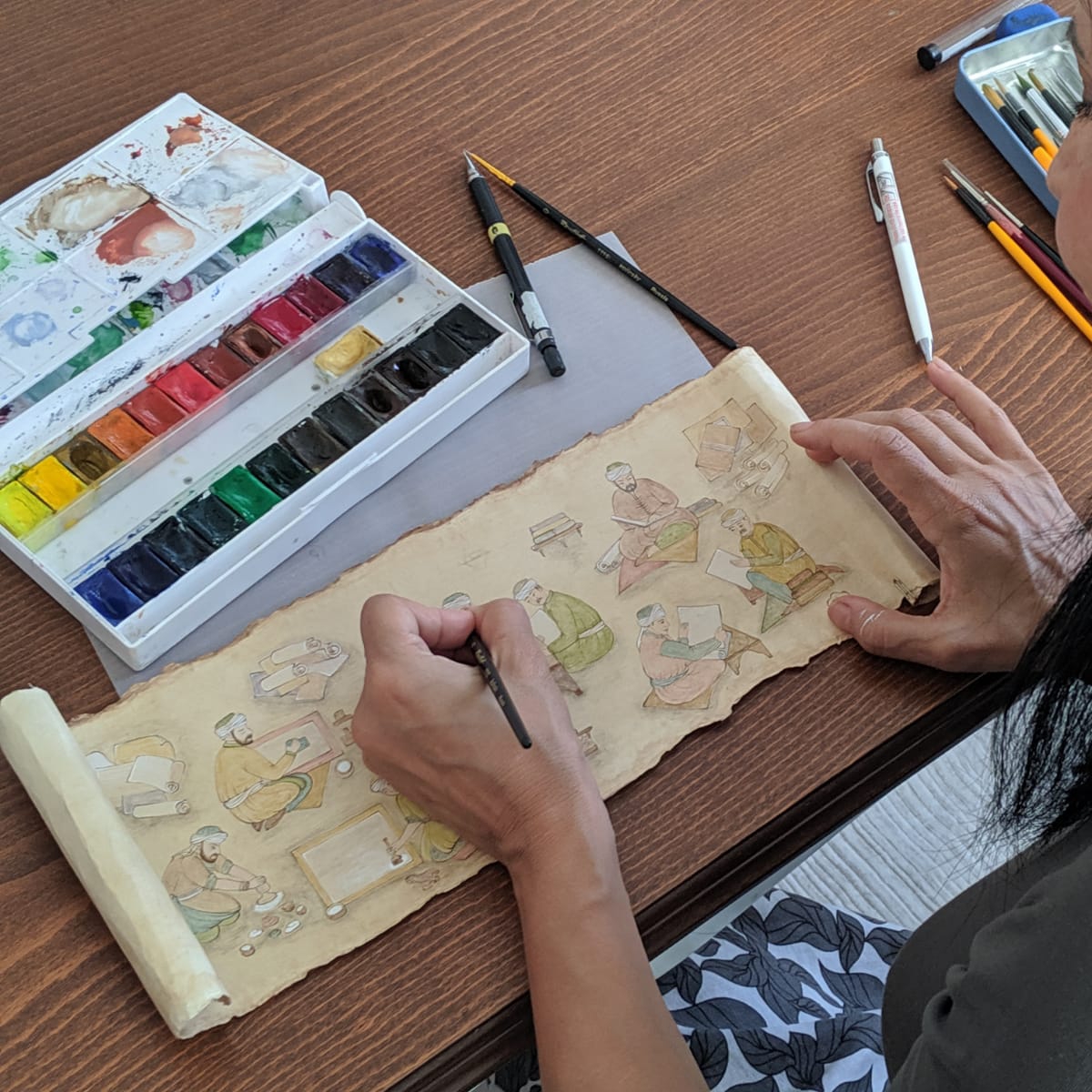
Miniature Art
The term “miniature art” being used for painting art made with a unique technique in order to explain texts in handwritten works in our tradition, explains the story or historical event visually by decorating it with its own features. As a word, miniature named after a paint with red color being named “minium” that was used in the ornaments of section headings of books in Europe in Middle Ages. These detailed ornamentations were named “miniare” and paintings that were processed with this paint decorating the text were named “miniature” and as a term having western origin it has been accepted in our recent history. In our previous sources for miniature words such as embroidery painting, hürde embroidery, depiction art, sebih, nigar, semblance, council and miniature have been used and for a person dealing with miniature words like muralist, musavvir, painter, vakanuvis, sebihnuvis, meclisnuvis, nigari, migarende, and nigarger have been used and for the space where this art was applied, embroidery space, miniature art space, and nigarhane have been used.
When the content of Turkish miniature art is examined, it is seen that it is mainly composed of works based on observations and documentations and one or a few stories are pictured on the same page as per the rules of miniature art, by being placed in the form of layers and perspective is used in a restricted way. In miniature works, everything is correctly drawn but it is avoided from drawing them exactly as per the Islamic arts philosophy. Abstract works being carefully done with colorful and figurative particulars are used in great harmony. All these features of miniature art enable the subject to be explained in a complete and realistic way. Miniature artists have processed various subjects ranging from portraits to flowers, from religious topics to depictions of a city, from daily life to living in a palace, from management ceremonies to war scenes with great mastership and the presence of miniature art rooms in the emperors’ palaces has provided an important basis for the progressing of this art. Literary manuscripts with miniature paintings involve poems, divans, stories, masnavies and khamsas. Historical manuscripts with miniature paintings involve Shahnamas which mentions emperors’ current and previous eras and Gazavatnamas which mentions wars. While Surnamas tell about princes’ circumcision celebration, Silsilenamas are illustrated manuscripts that relate emperors’ lineage to significant religious and historical figures. Scientific manuscripts consist of a wide range of topics like naval, geography and medicine. Albums consisting of several miniature paintings generally include portraits of emperors, illustrations showing the life outside the palace and flower paintings.
Materials that are used in miniature painting are various; pencil, rubber, tracing paper, rulers, watercolor paints, gouache paints, ink, ahar paper with various colors, varieties of gold, gum Arabic, gelatin, ruling pen, agate burnisher, several fine sable brushes for drawing contours, to name a few. In miniature painting, details of the design transferred on readily prepared ahar paper are completed by adding gold, painting with natural pigments and drawing fine contours. Colors are lucid and bright, objects and figures without shadow are rich in details. Crafting process and rules of miniature art are specific and during this process as in the case of the relationship of master and apprentice, it is progressed under the guidance of a good teacher. In miniature education process, logic and rules of traditional arts are understood first by examining and working on different works being done in the previous periods. It is studied on miniature works belonging to previous periods as relating to different schools by copying them and examined in historical order and hence, differences of each period relating to compositions and painting techniques are learned together with art history information. Creating a unique work in miniature art can be possible by bringing together both the right aspects of crafting (art history information, craft mastership, competency relating to painting, drawing and similar techniques) and the actual aspects of art (knowing what is desired to be accomplished, making research, reading, having unique ideas and design skills, working hard with determination).
Our miniature art is our art form that comes out from our history, which reflects our own culture, and it is the art form through which we can reflect ourselves in the best and most powerful way to other cultures and it is required to work by always being aware of this reality. Miniature works that add colors to handwritings with their engraved lines, magical colors, thin and detailed drawings, and stories being told, have transformed into unique paintings that are hung on the walls as having bigger dimensions and by preserving crafting features and art philosophy.
Gülçin Anmaç